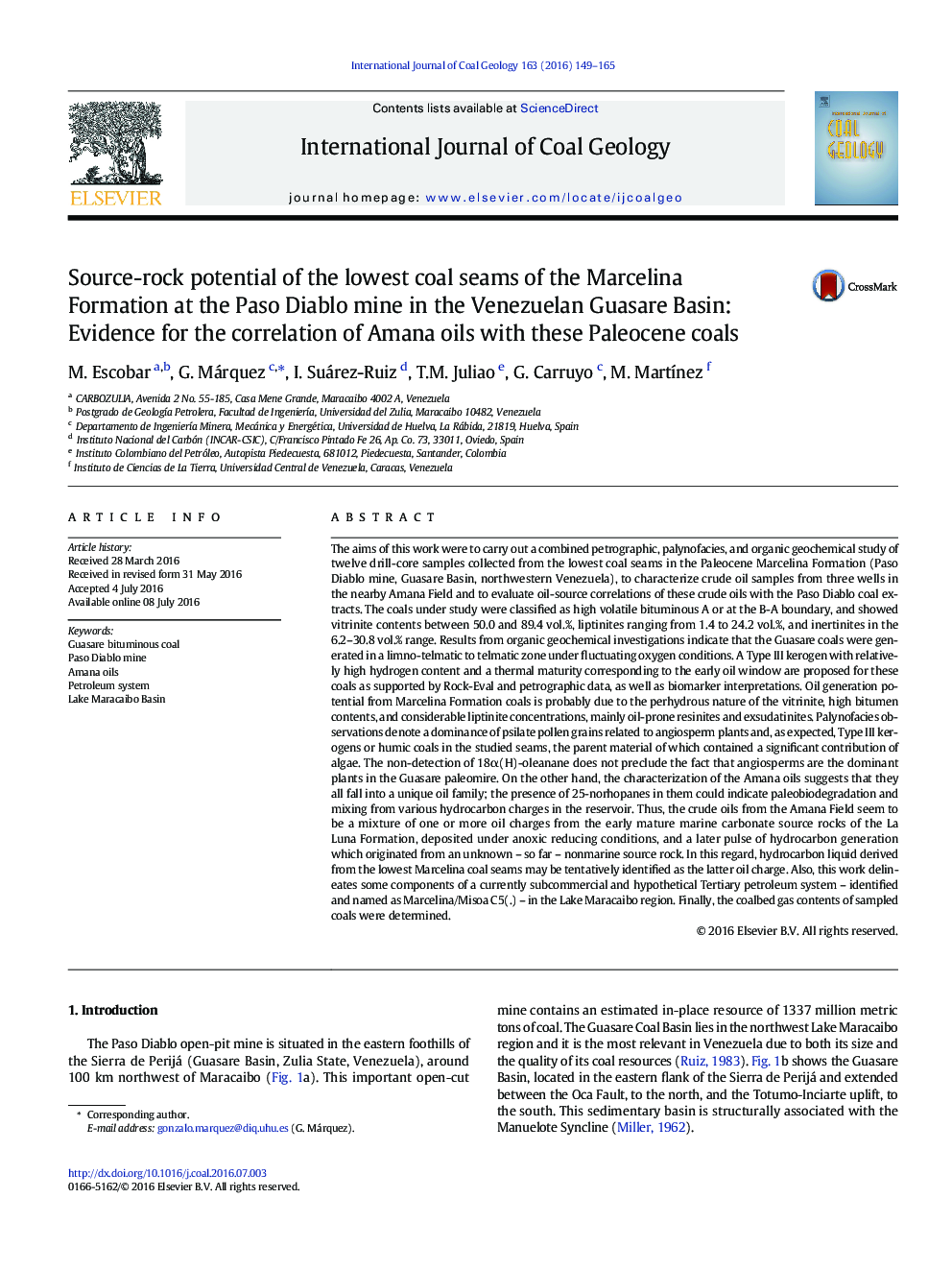| Article ID | Journal | Published Year | Pages | File Type |
|---|---|---|---|---|
| 8123792 | International Journal of Coal Geology | 2016 | 17 Pages |
Abstract
The aims of this work were to carry out a combined petrographic, palynofacies, and organic geochemical study of twelve drill-core samples collected from the lowest coal seams in the Paleocene Marcelina Formation (Paso Diablo mine, Guasare Basin, northwestern Venezuela), to characterize crude oil samples from three wells in the nearby Amana Field and to evaluate oil-source correlations of these crude oils with the Paso Diablo coal extracts. The coals under study were classified as high volatile bituminous A or at the B-A boundary, and showed vitrinite contents between 50.0 and 89.4 vol.%, liptinites ranging from 1.4 to 24.2 vol.%, and inertinites in the 6.2-30.8 vol.% range. Results from organic geochemical investigations indicate that the Guasare coals were generated in a limno-telmatic to telmatic zone under fluctuating oxygen conditions. A Type III kerogen with relatively high hydrogen content and a thermal maturity corresponding to the early oil window are proposed for these coals as supported by Rock-Eval and petrographic data, as well as biomarker interpretations. Oil generation potential from Marcelina Formation coals is probably due to the perhydrous nature of the vitrinite, high bitumen contents, and considerable liptinite concentrations, mainly oil-prone resinites and exsudatinites. Palynofacies observations denote a dominance of psilate pollen grains related to angiosperm plants and, as expected, Type III kerogens or humic coals in the studied seams, the parent material of which contained a significant contribution of algae. The non-detection of 18α(H)-oleanane does not preclude the fact that angiosperms are the dominant plants in the Guasare paleomire. On the other hand, the characterization of the Amana oils suggests that they all fall into a unique oil family; the presence of 25-norhopanes in them could indicate paleobiodegradation and mixing from various hydrocarbon charges in the reservoir. Thus, the crude oils from the Amana Field seem to be a mixture of one or more oil charges from the early mature marine carbonate source rocks of the La Luna Formation, deposited under anoxic reducing conditions, and a later pulse of hydrocarbon generation which originated from an unknown - so far - nonmarine source rock. In this regard, hydrocarbon liquid derived from the lowest Marcelina coal seams may be tentatively identified as the latter oil charge. Also, this work delineates some components of a currently subcommercial and hypothetical Tertiary petroleum system - identified and named as Marcelina/Misoa C5(.) - in the Lake Maracaibo region. Finally, the coalbed gas contents of sampled coals were determined.
Keywords
Related Topics
Physical Sciences and Engineering
Earth and Planetary Sciences
Economic Geology
Authors
M. Escobar, G. Márquez, I. Suárez-Ruiz, T.M. Juliao, G. Carruyo, M. MartÃnez,
